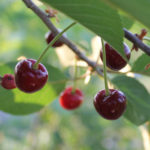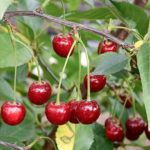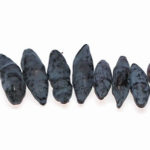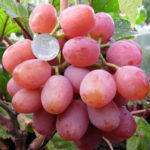Chrysanthemum Gagarin (Gagarin)
So that in the fall your flower garden is no worse than spring and summer, pleasing to the eye, plant more seasonal flowers in it. The first thing that comes to mind is chrysanthemums. Not so long ago, this family of noble plants was replenished with another novelty. We are talking about the Gagarin variety, named after the famous pilot-cosmonaut Yuri Gagarin.
History of appearance
This culture belongs to the single-headed large-flowered chrysanthemums, which are very popular among flower growers. Despite the fact that the variety bears the name of our compatriot, it was bred not in Russia, but in Holland. This happened in 2014. According to the manufacturer, this name was given to the flower because, thanks to its magnificent appearance, it has every chance of becoming legendary, like the astronaut mentioned above.
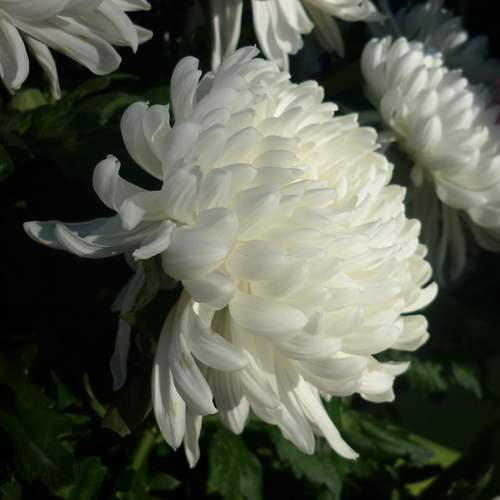
The direct author of the Gagarin variety is Deliflor Chrysanten. It is the largest producer of chrysanthemums on the planet. The firm presented its new creation in the same year at the international exhibition Flowers Expo-2014, which was a huge success in Moscow. Here European culture won not only one of the honorary titles, but also received a gold medal following the results of the competition for novelties of flower selection.
Description of appearance and features
Gagarin is a powerful, densely leafy shrub with sturdy stems that do not linger during flowering. Its height is small - less than a meter, more precisely from 60 to 70 cm. The leaves of the plant are large, beautifully carved, juicy green. Since our hero belongs to one-headed decorative cultures, each of his strong shoots bears one flower - impressive and snow-white. The core of the inflorescence is twisted, formed by shortened petals. At the edges, the petals are longer, terry. The diameter of the bud is 20-24 cm. The flower looks incredibly delicate. Chrysanthemum is an early flowering plant.
Gagarin has high winter hardiness, good endurance in transportation conditions. It is rarely affected by fungal diseases and bacterial infections, if you follow the recommendations for care. In addition, large white inflorescences are resistant to cutting and have bypassed many well-known varieties in this quality. Charming flowers lend themselves to artificial coloring in any other shade.
Growing and care
The new Dutch variety Gagarin, like most of its large-flowered counterparts, grows best in a well-lit area. If the fall is usually too sunny in your area, do not forget to shade the chrysanthemum in the midday hours. Do not expose it to the destructive effects of a cold draft.
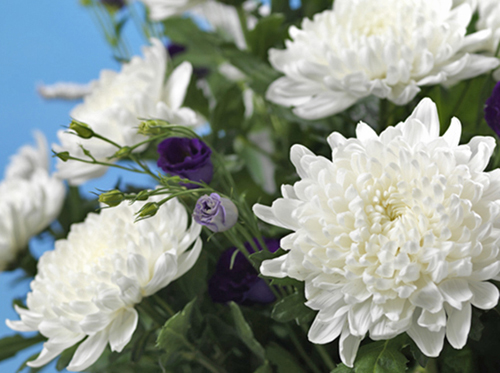
The culture is not particularly demanding on the soil. However, the soil in which you plan to plant Gagarin must be sufficiently fertile and loose. For this, humus and sand are added to it. A layer of drainage material is laid on the bottom of the shallow planting pit. After planting, the plant is immediately watered.
The main activities for the care of the shrub: watering and feeding. Both of these procedures are carried out in a timely manner, preventing the soil under the crop from drying out and depleting the land. For irrigation, use soft, settled water heated in the sun. Since Gagarin's bush is undersized, 1-1.5 buckets at a time will be enough for him. Young plants should be watered as often as possible - up to three times a week. Make sure that moisture does not get on the leaves and, moreover, on the flowers.
Since spring, nitrogen fertilizers are applied under the crop. This has a positive effect on the growth rate and color of the leaves. In the budding phase, the plant needs to be fed with a mineral concentrate with a large amount of phosphorus in the composition.This accelerates the flowering of the chrysanthemum, makes the inflorescences appearing on the bush more decorative.
Use cases
A low-growing plant can be planted in open ground in flower beds, in group plantings with similar and other varieties of large-flowered perennials. Gagarin looks favorably on the sides of the garden paths. Due to its compact size, Gagarin is also grown as a pot culture. Florists include white chrysanthemum buds in floral arrangements.

